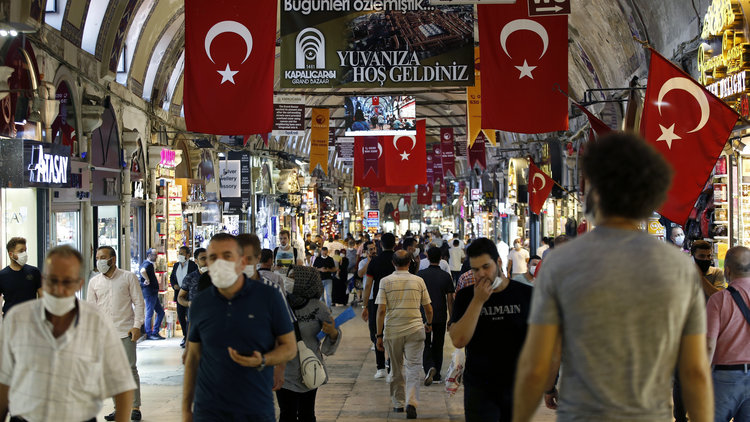Qua vadis, Lira?

After staying in the 7.70-7.90 range for the good part of the summer, the euro lira exchange rate (EURTRY) suddenly jumped around 10 percent in early August in a matter of days- and has been oscillating in the 8.50-8.80 band since then. This depreciation was largely specific to Turkey, as the currencies of other emerging markets remained largely stable.
Is the lira prone to further episodes of depreciation? Or will it stabilize around the current levels- or maybe even appreciate? Note that the exchange rate was being kept artificially low until August, with state banks and the Central Bank of Turkey (CBT) defending the lira by selling foreign currency in the billions. As a result, when you account for swaps (foreign currency the Central Bank has borrowed from commercial banks), the CBT’s net reserves are now well into negative territory. The Central Bank probably figured out in early August that at the rate it was burning through reserves, it couldn’t defend the lira anymore- so they just let it find its market value. But what is this market value? How is it determined?
Economists estimate the “fair value” of currencies with statistical models. Deutsche Bank and the International Institute of Finance have recently calculated this fair value to be in the range of 7.30 to 7.50 for the dollar lira exchange rate (USDTRY). In fact, an International Monetary Fund (IMF) report from last year reached similar conclusions. This would mean that EURUSD has some room to go, but not by much.
But if panic sets in and people start selling lira because of economic or political, or even geopolitical, reasons, the exchange rate could temporarily move way past its fair value, what economists call “overshooting”. Who could set such a panic? For one, there is still USD 10 to 15 billion of hot money (funds) in Turkey. Non-domestic residents hold deposits as well. They withdrew USD 1.5 billion in June, according to the latest statistics. But most importantly, domestic residents are holding USD 186 billion of foreign currency deposits. If they are unnerved and decide to withdraw their deposits en masse, then the sky is the limit for EURUSD.
Macro statistics do not favor the lira, either. As economist Atilla Yesilada has noted, external debt amortizations amount to USD 12-13 billion from September until the end of the year. Assuming the current refinancing rate of 75%, USD 3-4 billion will leave the country from this channel. Furthermore, economists expect the country to continue running current account deficits until at least October, which would add a further USD 10-12 billion to the external financing requirement.
But at the end of the day, policy reactions will determine the lira’s fate. If Erdogan lets the Central Bank raise interest rates (it is currently implementing “stealth hikes” by funding commercial banks at higher rates, but has resisted official hikes so far), replaces his Finance Minister (and son-in-law) Berat Albayrak and the Central Bank governor with figures trusted and respected by markets and calls in the IMF if things take a turn for the worse, EURUSD could easily pull back to values seen in the spring (around 7). If not, I wouldn’t rule out a “two-digit exchange rate”, which would devastate the economy. So what would the President do?
On one hand, higher interest rates and the IMF are “deadly sins” for Erdogan, and he has been behind his Albayrak 100%, defending him at every opportunity. On the other hand, the Turkish strongman is also known for his practicality as well as 180-degree turns, as the Father Brunson case has illustrated: After suggesting the U.S. would need to hand over cleric Fethullah Gulen, who is widely seen to be behind the 2016 putsch, for the American pastor accused of terrorism to be released, he had him freed right away after Trump’s social media threats depreciated the lira 50%.
So if you are really wondering where the lira may go, you might be better off by trying to understand President Erdogan rather than the Turkish economy.